

Goathland is a small village high on the North Yorkshire Moors. It has a population of around 450 and is lucky enough to still have a village Post Office, a village school, and several village pubs. Glendale House is a small bed and breakfast, right in the centre of the village. Goathland is surrounded by open moorland, and farms. During late summer, the heather turns a vivid purple as far as the eye can see, and its honey-like smell fills the air. Sheep are free to roam in the village and on the moors, and the Goathland sees its first lambs from May onwards. The shepherd and his sheep dogs can be seen almost daily, rounding up the sheep in the village, and driving them back up onto the moors, where they turn round and make their way back into the village. There are several waterfalls around Goathland, the most well known are the Mallyan Spout, Water Ark, and Thomason Foss. There are interesting walks in virtually every direction, all of which take you through stunning scenery. It's worth noting, that no matter how busy it gets around the shops in the the village, the walks, the waterfalls, and the moors, are still as quiet as they ever were, and after 5.30pm, 365 days of the year ... the whole village is quiet. |
|||||||||||||||
|
Click to see panoramic photographs of Goathland
Goathland Traffic Jam |
|||
|---|---|---|---|
 |
 |
 |
|
Goathland Traffic Signs |
|||
|---|---|---|---|
 |
 |
 |
 |
 |
 |
 |
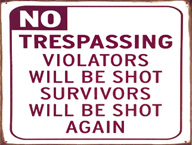 |
Goathland Quoits Team |
|---|
| Quoits is an old traditional game, which is played by throwing a heavy metal ring, and trying to get it over a metal post, or "hob". The pitch has a clay pit about 3 feet square at each end, with a hob sticking up about 3 inches above the surface. The hobs are exactly 11 yards apart. A typical quoit is around 8 inches in diameter, and approximately 5 pounds in weight. The clay pits are covered with wooden boxes when not in use, to protect the clay. During the summer, quoits is usually played on Monday / Thursday evenings, and Saturdays, on the green at Beck Hole |
 |
 |
 |
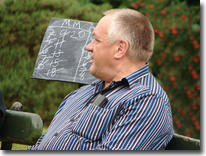 |
|---|---|---|---|
 |
 |
 |
 |
Goathland Plough Stots |
|---|
| The Goathland Plough Stots is probably one of the oldest traditional long sword dancing teams in the country, still dancing their own dance that dates back to the early 19th century. The dancers wear a uniform of pink and blue tunics tied with a white sash and grey trousers with red stripes. The tunic colours of pink and blue were chosen to placate the political parties of the 19th century, (the Whigs & Tories). Although the tradition dates back to the early 19th century, it would die out without new younger members, and Goathland is lucky to still have many young children ready to carry on the tradition. The Plough Stots are also lucky to have the unqualified support of the folk musician Eliza Carthy and her parents Martin Carthy and Norma Waterson. |
 |
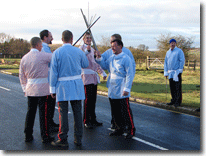 |
 |
 |
 |
 |
 |
 |
 |
 |
 |
 |
 |
 |
 |
Springtime in Goathland |
|||
Goathland can be beautiful at any time of the year, but springtime has a beauty all of it's own. As winter relinquishes it's grasp, the moorland landscape starts to burst into life. High on the North Yorkshire Moors, Spring comes late. We are always the last to get spring lambs, and the trees don't burst into blossom until mid April. Bright spring days and blustery fresh winds make perfect days for exploring the moors, when the air is often scented with the smell of burning heather, as spring is also a time for controlled burning. |
|||
 |
 |
 |
 |
 |
 |
 |
 |
 |
 |
 |
 |
 |
 |
 |
 |
Late summer in Goathland |
|||
Around the end of August / beginning of September, the heather bursts into flower, and the whole of the moors around Goathland become a spectacular purple carpet. |
|||
 |
 |
 |
 |
 |
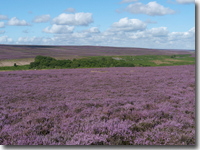 |
 |
 |
 |
 |
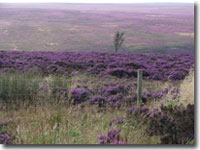 |
 |
Autumn is one of the nicest times of year on the Yorkshire moors. The days are getting shorter, the leaves turn golden and start to fall, and the smell of bonfires hangs in the air. From October, the farmers right across the moors, start to burn off the heather. This keeps heather young, allowing more fresh shoots for stock to graze and reduces attack by pests such as heather beetle. Burning grass moorland is designed to remove the cover of dead leaves which prevents light reaching the young grass shoots in spring, thereby allowing grazing earlier in the next year. Many visitors mistake this controlled burning for moor fires, and report it to the fire brigade. |
|||
 |
 |
 |
 |
 |
 |
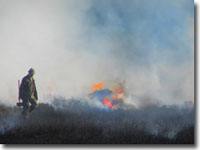 |
 |
 |
|||
Winter in Goathland |
||
As the days get shorter, and the nights get longer, winter can mean grey miserable days, and long nights in front of a log fire. But it can also mean beautiful blue skies, snow and frost |
||
 |
 |
 |
 |
 |
 |
 |
||
Click for more Goathland in winter photos, or here for the Goathland in winter slideshow.
home | house | rooms | rates | goathland | directions | heartbeat1 | heartbeat 2 |heartbeat 3 | heartbeat slideshow | harry potter | wartime w/e | steam trains | the area
| events | winter | calendar | panoramas | videos | Captain Cook